16 Dec Hiral Bhagat
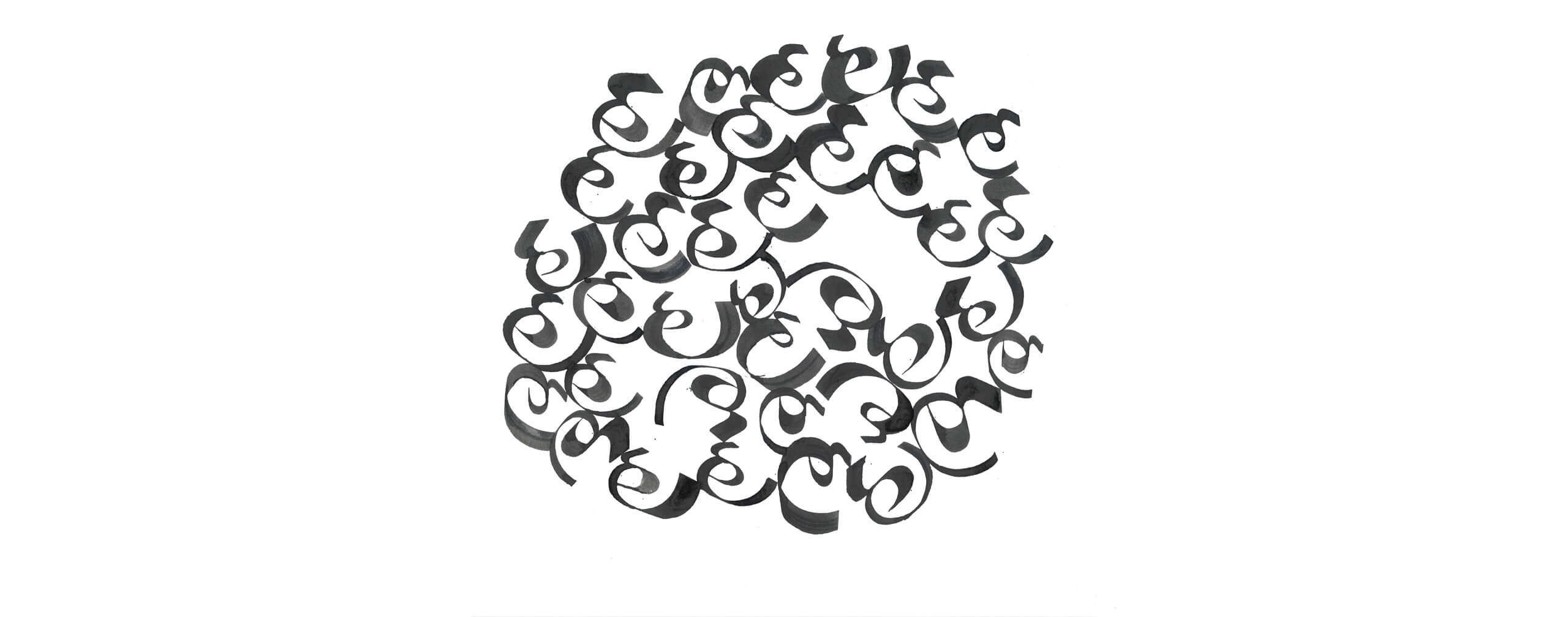
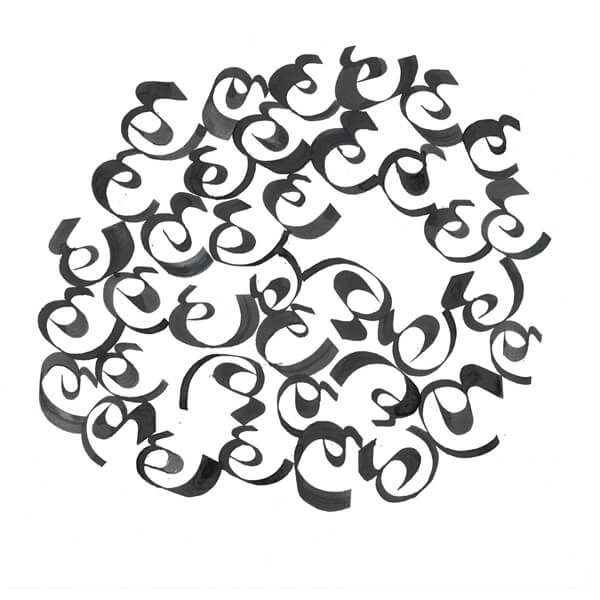
The content aspects of written language is learned, taught and researched in the field of linguistic or sociology.
Writing is the most significant invention of man by which he started retaining messages for an indefinite time to convey ideas. Writing has given the visual form to spoken languages. Visual form of the writing is important to both-recording and reading and thus it is important to make writing beautiful.
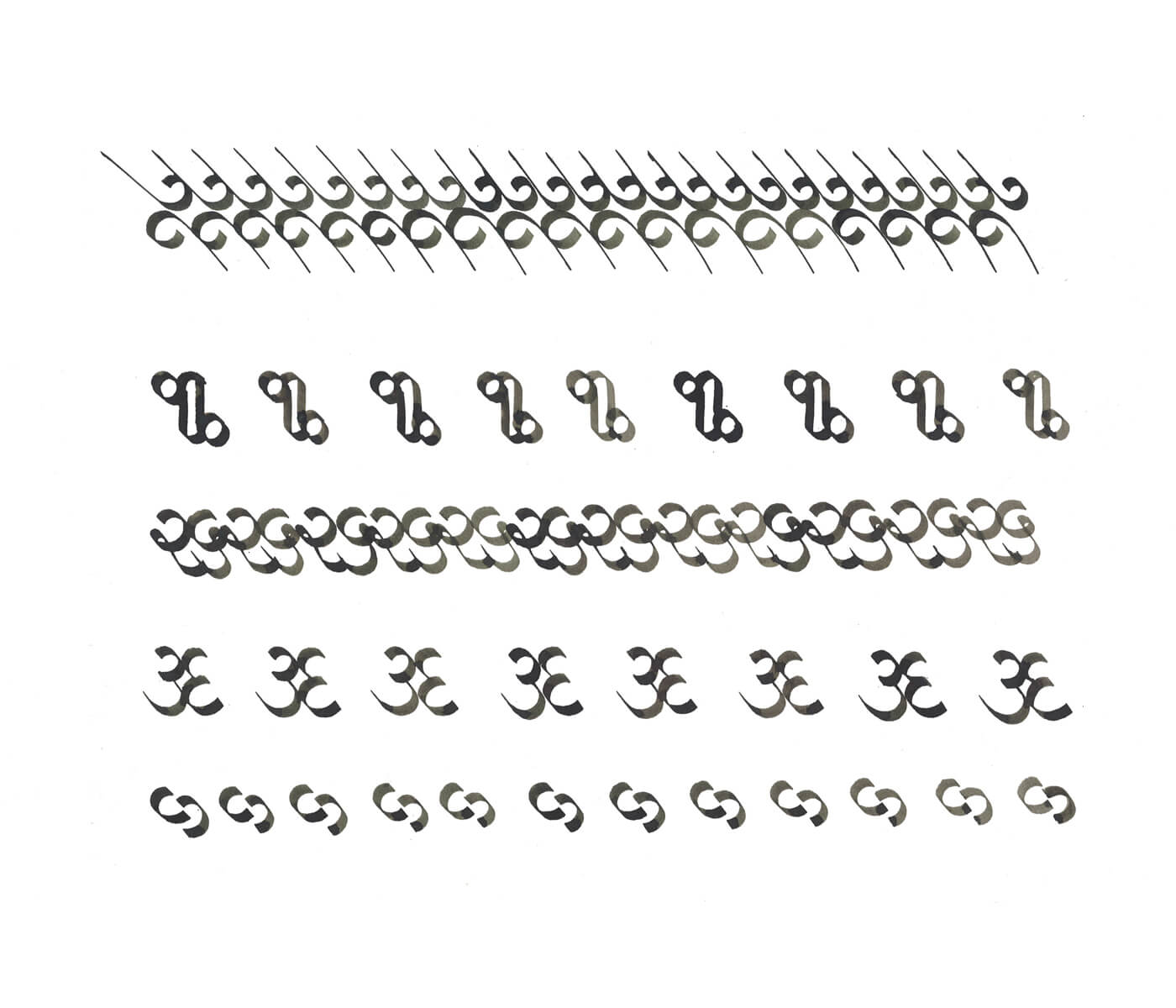
The styles of writings have changed from place to place, from time to time and from culture to culture. Distinct writings styles of world have emerged as per availability of writing surfaces, tools and mediums. Content and form are two very fundamental aspects to any written materials to create meaning in the language. The content aspects of written language is learned, taught and researched in the field of linguistic or sociology.
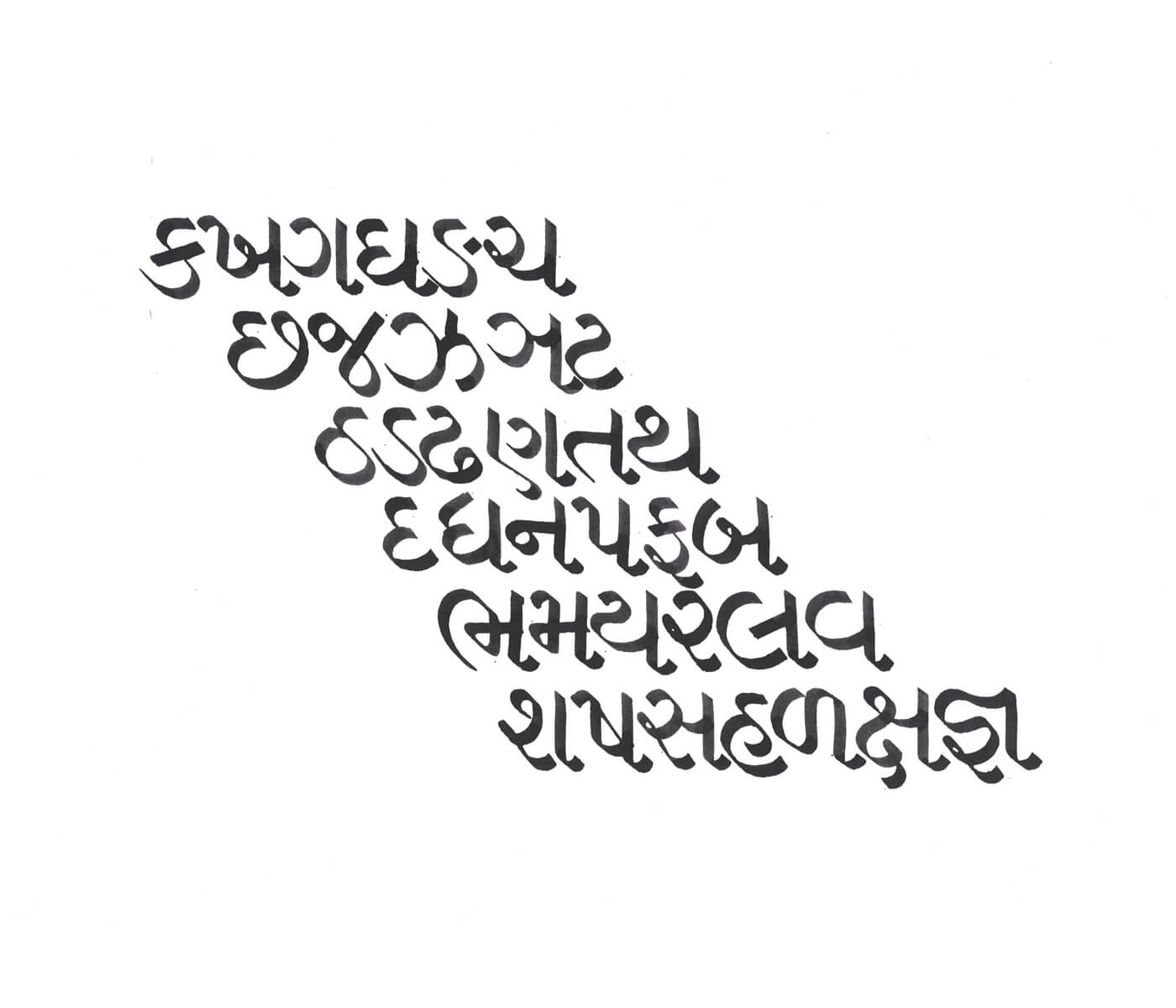
It is equally important to study formal aspects of written language and it can be dealt with in the discipline of calligraphy, which considered as art of beautiful handwriting. Art of calligraphy involves highest human senses of mind, eyes, hand and breathing coordination while performance. Calligraphy demands concentration. As Gujarati is my mother tongue, the focus of this manifesto is Gujarati language calligraphy. Gujarati script is derived from 10th century Devanagari script, which is of Brahmi origin used for Sanskrit. This non-decorative script had used for very functional writing for communication, commerce and court. The religious manuscripts of Jain religion were the main source for the evolution of Gujarati script.
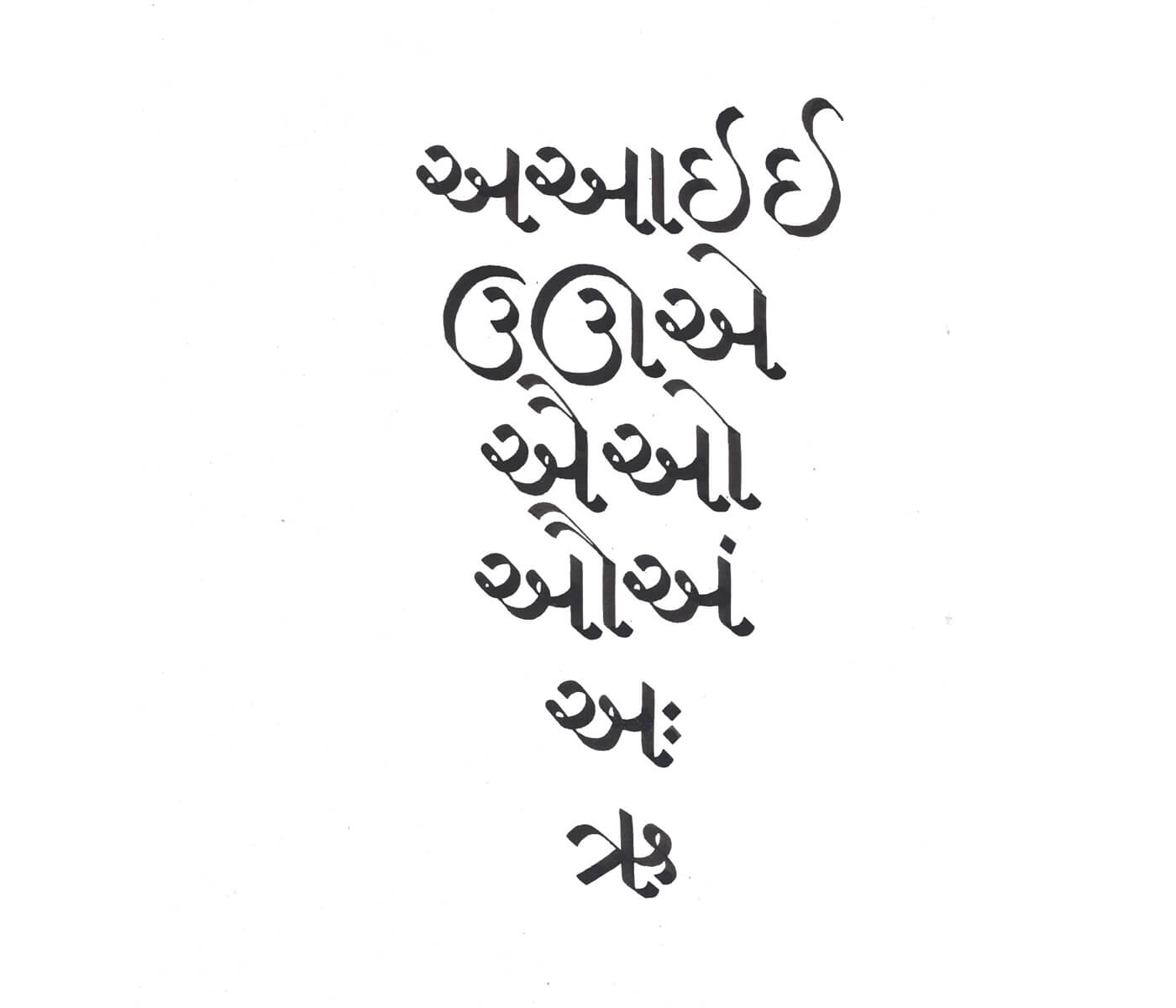
In this script vertical strokes end with an upward short serif, projecting a casual, informal character of Devanagari letterform. The main difference is the absence of top line over the each character, which is the main character of the Devanagari script. The original Gujarati script had concept of writing swiftly and without lifting pen because it was a script for commerce and trade. The history of language through its culture, people and environment can guide us about evolution of writing style of the particular language, which can also create the backdrop of the present day study of the discipline and forecast the future of it.
The poems, paragraphs or short story written in calligraphy can delivery multi layered experience to the reader and the viewer.
The calligraphy can infuse high order of skill into a letterer, graphic consideration into a graphic designer, spatial sensitivity into typographer and fundamentals of letterforms into type designer. The calligrapher can contribute to the discipline of art and design by acquiring these qualities through continuous practice and research of various writing systems. This research of past masters’ work, original scripts, manuscripts, letterforms and alphabets can help us develop writing systems for our present and future use.
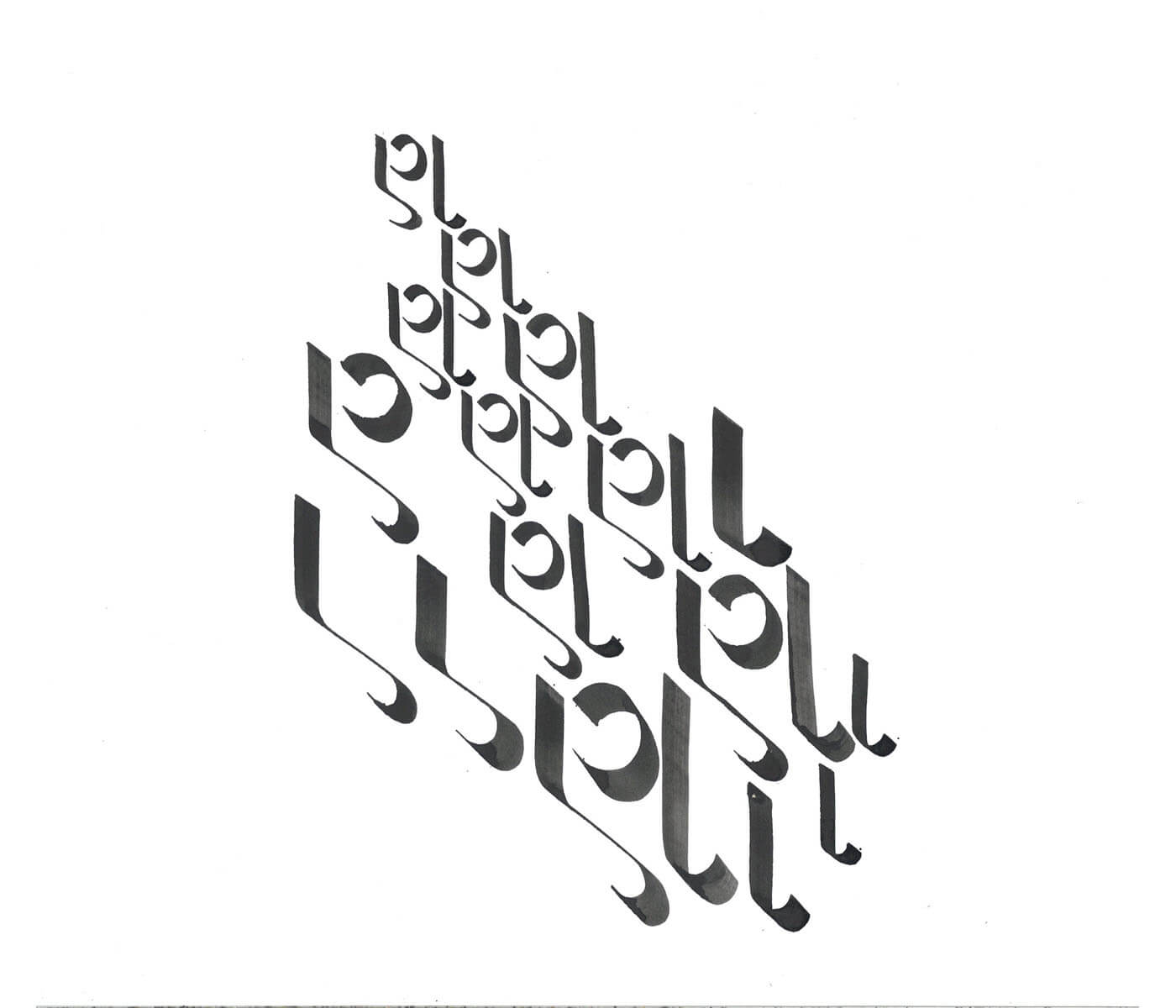
When a child starts speaking, he first gets the speech from a mother that is the first encounter of language for a child so it is called as mother tongue. Therefore I am searching my path and gathering my thoughts in my mother tongue. Naturally my inclination is towards exploring my mother tongue Gujarati and Gujarati writing system. The calligrapher uses own mother tongue to revive language is the unique aspect. The role of a regional calligrapher is more challenging as one is trying to put the language in front of larger audience.
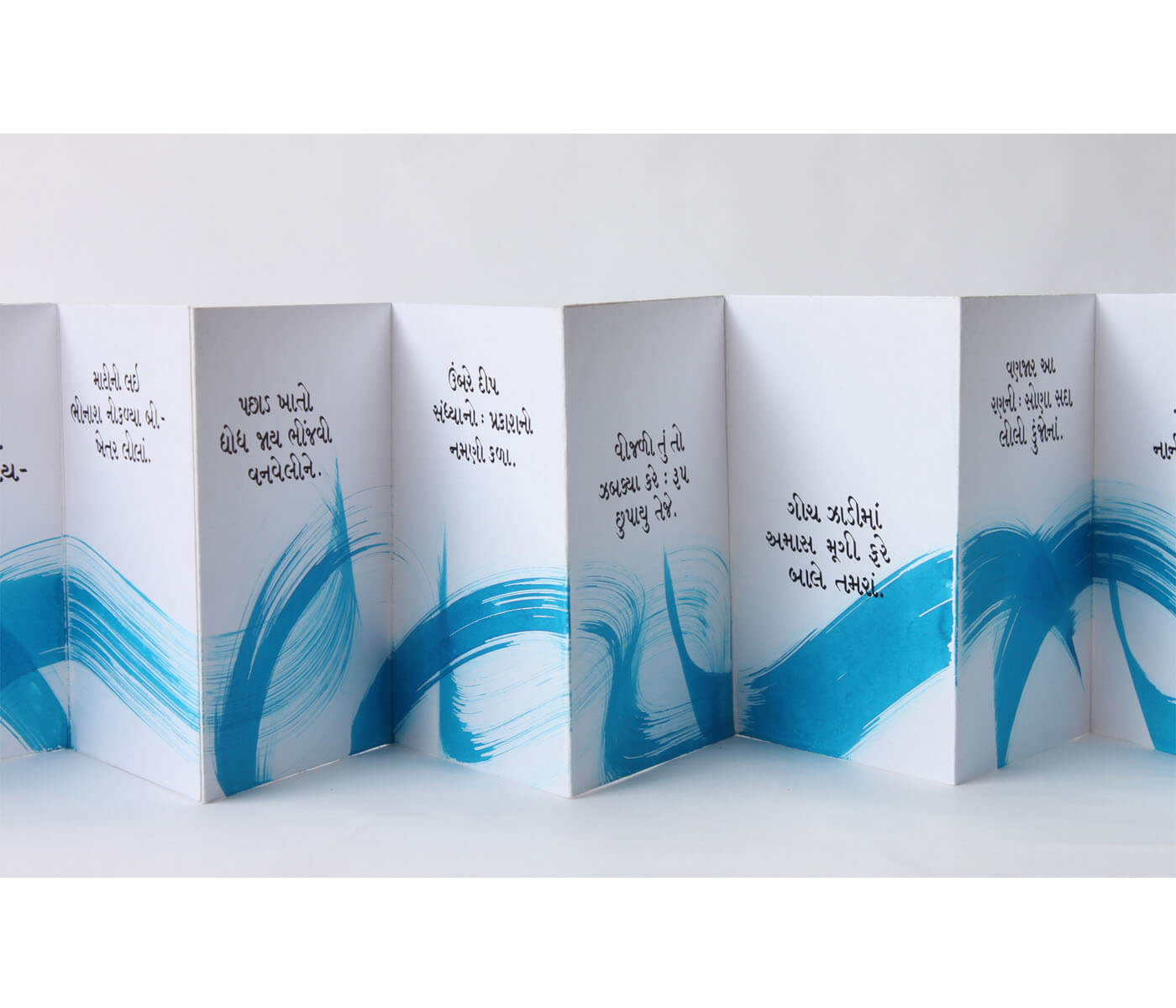
My focus is to study the Gujarati alphabets through historical evidences and references from the literature. I am currently experimenting with calligrams and calligraphy to explore visual dimension of the letterforms using design principles. As Gujarati language has rich literature heritage and culture, I feel it essential to translate poetic thoughts into visual dimension through use of calligraphic expression. The poems, paragraphs or short story written in calligraphy can delivery multi layered experience to the reader and the viewer. These literature pieces presented in the stylized calligraphy indicates way towards a more positive relationship between written and spoken language. Our socio-cultural bonding and environment influences the way letterforms are used in our surroundings. (On building, hording, street signs, on vehicles, on clothes, on products etc.)
I am observing this relationship to use in my calligraphy work, which reflects aesthetics of vernacular language in visual form. My calligraphy work constantly evolves through establishing relationship with different types of tools, materials and surfaces to create different types of styles.
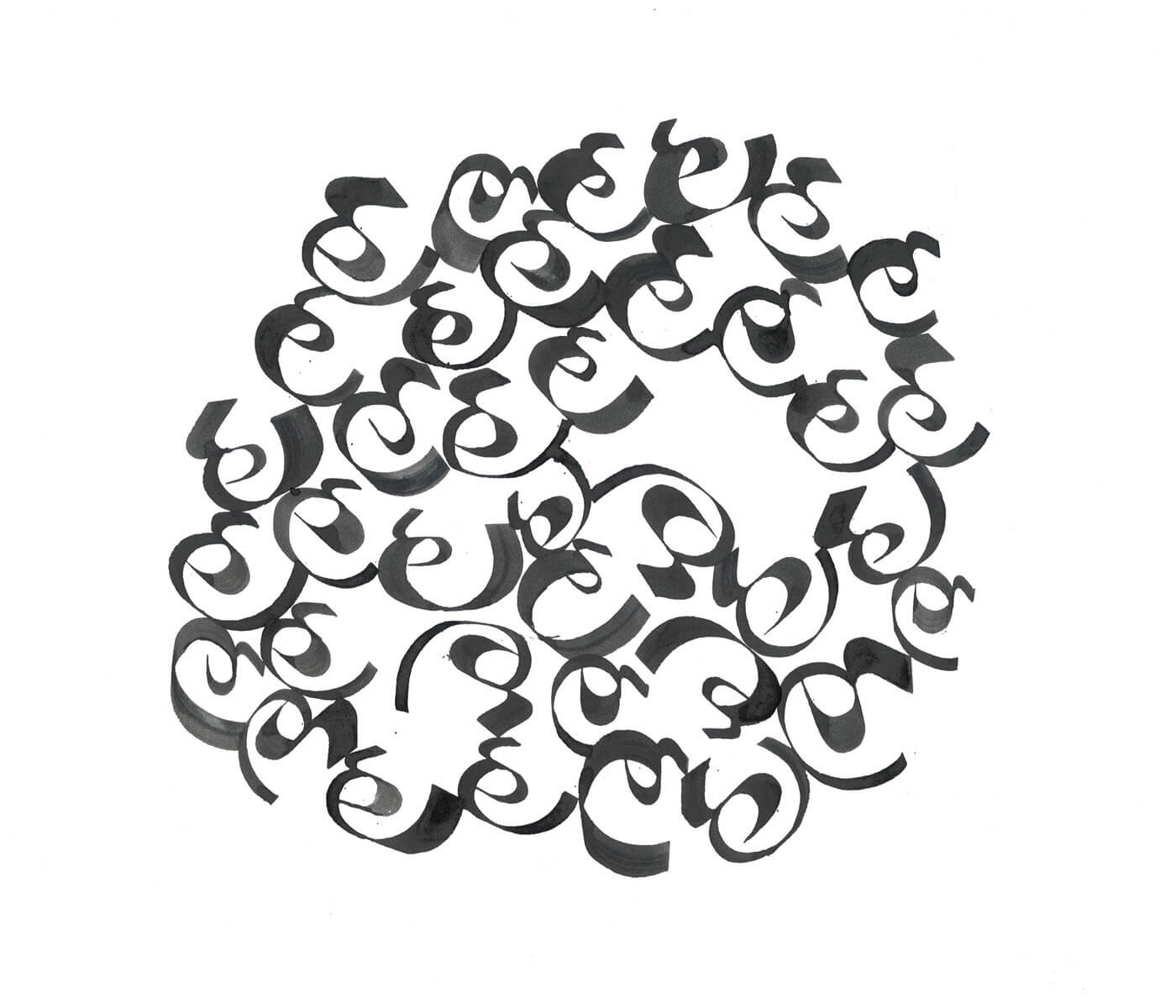
To spread awareness, I give live demonstration of Gujarati calligraphy for art and design institutes students as well as authors and poets in literature festivals. This activity facilitates dialogue and knowledge sharing with like-minded people.
Super sophisticated machines threaten human future and its intelligence can easily do all work much faster and precisely.
Though calligraphy is the art of beautiful and meaningful writing, it has not got special platform in the field of visual arts. There will be efforts in the right direction to achieve desired standpoint of calligraphy and specially Gujarati calligraphy in visual art field by spreading awareness amongst art galleries, art museums, art festivals, art exhibitions, art summits, art critics and artists.
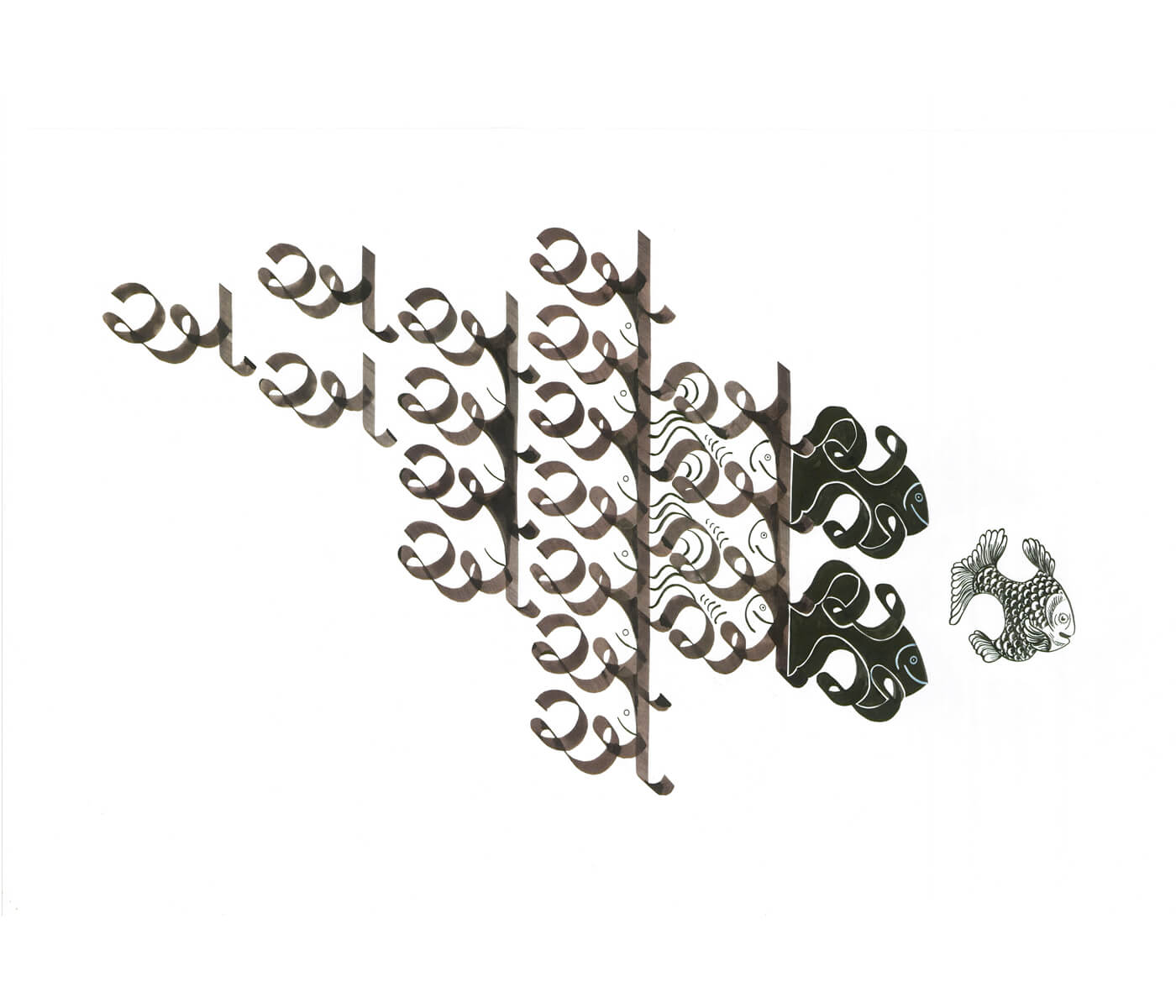
This will also help to get art scholarships and residency for young calligraphy artists. Handwork is the fundamental to calligraphy art. Super sophisticated machines threaten human future and its intelligence can easily do all work much faster and precisely. It will challenge the existence of hand made work. Artist will also use machines to create their artwork, which will lack tactility of hand made work. People will also forget to write by hand as computer typing will take over writing. In this landscape, calligraphy can re establish relationship with mind, eye and hand. It will give freedom of expression, individuality, uniqueness, experience, concentration and feeling of satisfaction to creator and viewer as well.
. In turn calligraphic knowledge can open new logic and rationales to develop user interface for digital gadgets. The importance of calligraphy and writing will be introduced from primary level education. There is a strong recommendation to include calligraphy in the higher-level curriculum of visual design & art education. In the digital era, the communication will go through transformation. People will use symbols instead of words and letter. Calligraphy can contribute to translate the letterforms into symbols, can combine two or more scripts to create unique symbols or can translate physical structure of the written language itself by studying manuscripts of past.
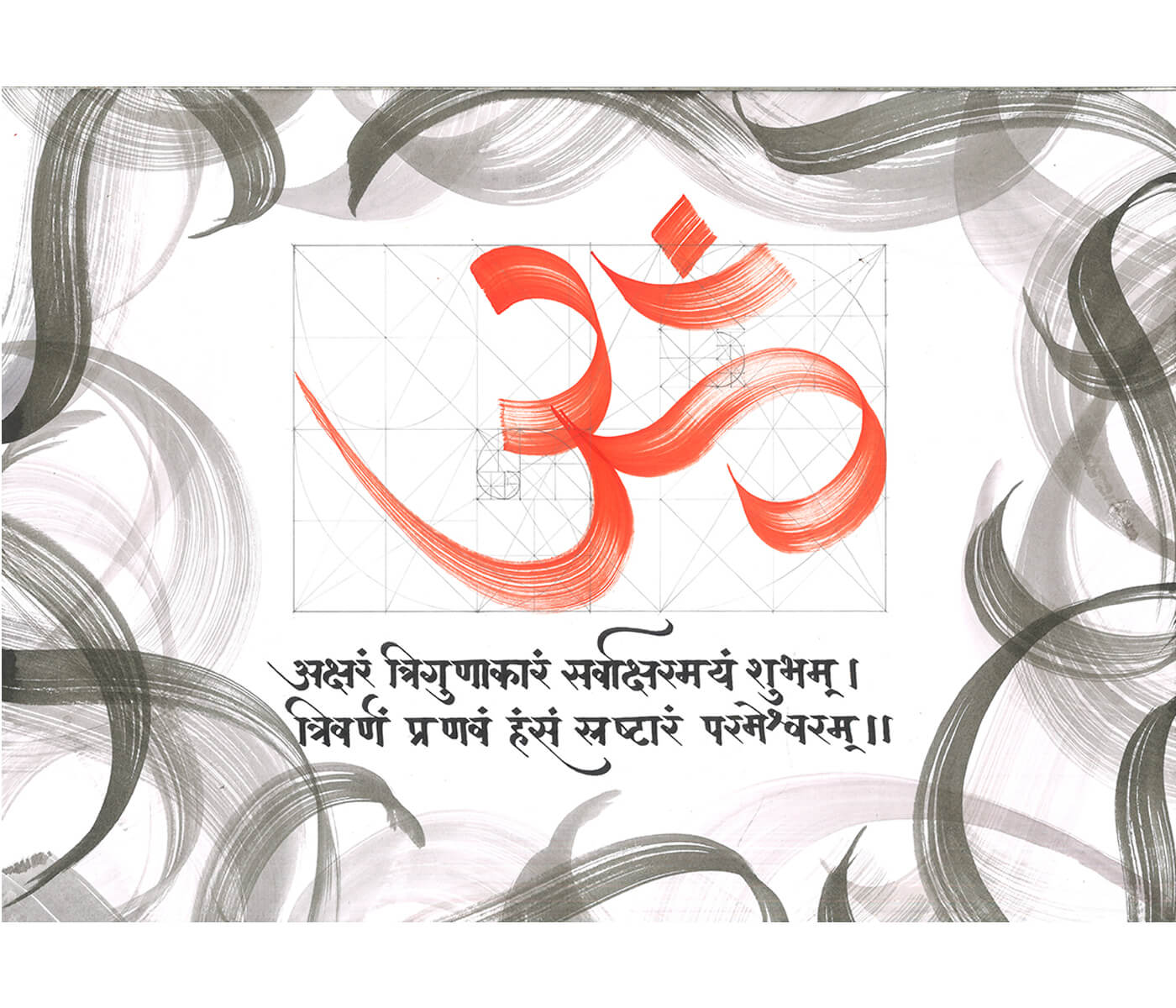
Architecture, design, music, painting and other performing art will influence the visual and aesthetic qualities of calligraphy in its respective culture and environment.
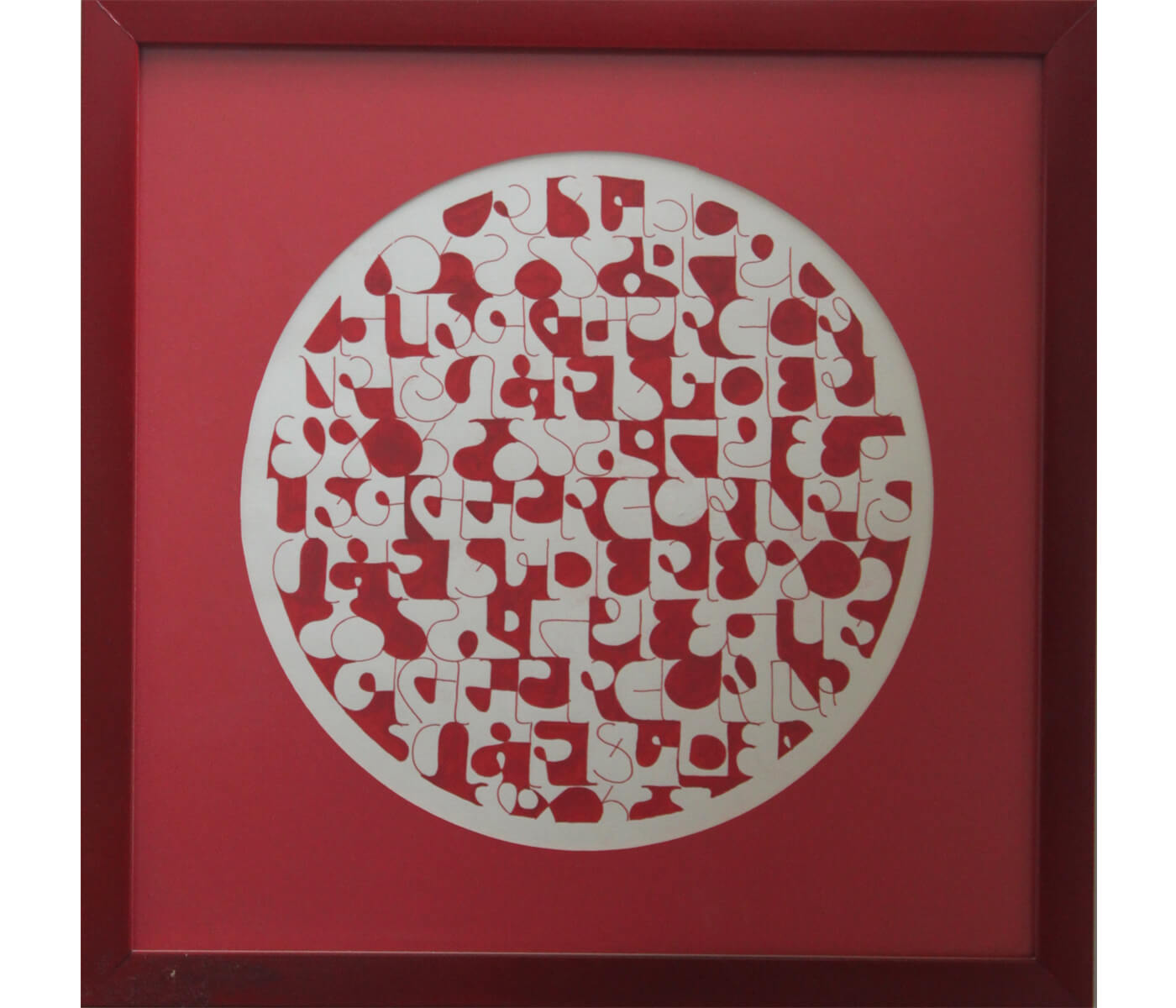
My significance focus will be to create meaningful calligraphy installation art using inspiration from literature, which will engage viewer and spread awareness about importance of spoken and written language.
Hiral Bhagat
DESIGN FIELD
VisualL Communication and Calligrapher
LOCATION
Ahmedabad, India
ABOUT
Hiral Bhagat has done five years diploma in Applied Art. She got an opportunity to learn advance calligraphy in Mumbai from Achyut Palav. She had participated in various workshops, demonstrations and calligraphy group exhibitions at Mumbai and Ahmedabad. She is currently working on Roman and Devnagari scripts in calligraphy with new mediums, tools and techniques. Her goal is to take Gujarati calligraphy to international level. Her keen interest is to look at calligraphy as art form.
She has conducted several workshops of calligraphy at premier design and art institutes like CEPT University, IIT- Gandhinagar, Hutheesing visual art center, Kanoria Center for Arts etc. at Ahmedabad.


